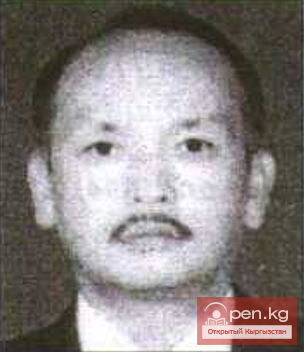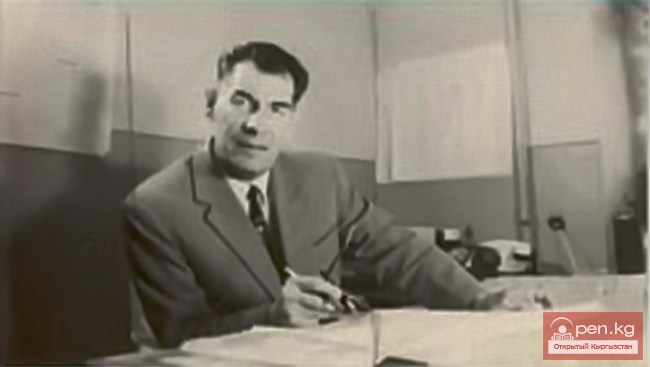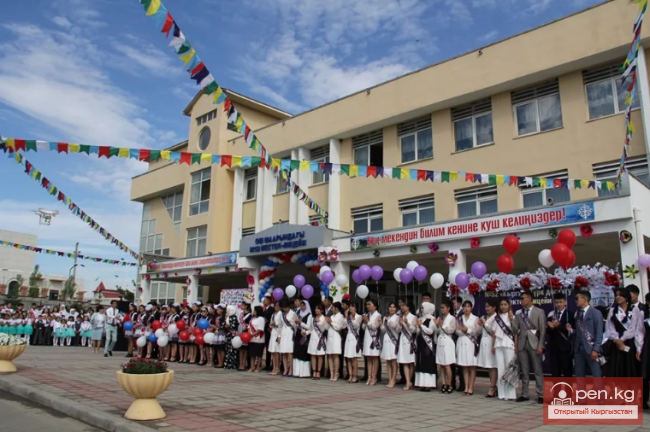
MEMORANDUM FROM THE DEPUTY CHAIRMAN OF THE FRUNZE CITY COUNCIL TO THE STATE PLANNING COMMITTEE OF THE KIRGHIZ SSR ON THE STATE OF HOUSING IN THE CITY OF FRUNZE
City of Frunze, 1938
The state of housing in the city of Frunze does not meet the most basic requirements of today, neither in qualitative nor in quantitative indicators.
The legacy of the former Pipchek, which was a village with clay huts, earthen and frame single-story houses with reed roofs surrounded by clay walls (fences), remains predominant.
The existing housing stock was owned exclusively by private owners. The municipal administrative stock was negligible. Its main objects included a prison, treasury, post office, hospital, and schools.
The unpaved market, which was muddy, constituted the central part of the city. Other areas of the city differed from one another in the degree of neglect.
The first years after the October Revolution did little to change the character of the city's housing stock. The city continued to grow. The growth of the housing stock occurred through the creation of new settlements on the outskirts of the city, such as the workers' town, Intergelpo (a cooperative of foreign workers who arrived in the USSR in 1925), settlements around the brick factory, leather factory, and others under various names like "Shanghai," "Paris," "Dunganovka," etc.
Since the construction of the railway line (1924), growth began to accelerate. These developments led to the pollution of the city with a large number of low-value houses. The predominant number of houses, up to 85-90%, had earthen floors and reed roofs and were essentially uninhabitable; currently, they account for up to 30% of the total housing area when calculating the living space per resident.
The indicators provided below, based on the 1926 census data, reflect only the useful living area and also characterize the quality of the city's housing stock: The entire housing stock in 1926 consisted of 5,238 houses with a living area of 1,137,915 square meters, which equated to an average of 3.9 square meters of living space per resident. The housing stock was mainly in the private sector, i.e., 92.7%, while the nationalized and municipalized stock accounted for 6%, and the cooperative stock was 1.3%.
Out of the 52,389 houses at that time, there were 34 brick-stone houses, 131 wooden houses, and the remaining 5,073 or 96.8% were made of earthen, frame, adobe, and other types of construction.
In 1934, the housing stock increased to 5,530 houses with a living area of 242,200 square meters. This included 8 brick-stone houses, 105 wooden houses, 3,910 earthen houses, 1,405 frame houses, and 102 adobe and other types. In this case, the housing stock mainly belonged to the private sector, accounting for 76.6%. The average living space per resident was 3.6 square meters.
According to the inventory as of January 1, 1936, the housing stock reached 284,175 square meters, determining the average living space per urban resident at 3.3 square meters; in 1936, 7,100 square meters were put into operation. However, in the same year, 65 houses in the city center, made of adobe with reed roofs and earthen floors, which were almost uninhabitable, were demolished, with a living area of 2,878 square meters for construction in 1936. In 1936-37, similar types of buildings will be demolished within 32,000 square meters on sites already allocated for construction: the Penko-Jute Factory, the State Theater, and other major construction projects.
While only up to 16,000 square meters are expected to be put into operation by the end of 1937, in this case, the living space per resident will decrease to 3 square meters.
From the indicators provided above, it is evident that the housing stock mainly consists of low-value houses with earthen floors and reed roofs, where one can often find several dilapidated shacks after rainy weather. In these houses, the majority of the city's industrial workers reside, where unsanitary conditions prevail, leading to frequent illnesses among the population living in these houses. By no later than 1937, more than 5,000 square meters of living space must be demolished as uninhabitable due to dilapidation, and at least 20% of the entire existing housing stock requires major repairs in 1937, which in absolute figures amounts to 55,000 square meters.
Thus, the average living space per resident fell from 3.6 square meters in 1934 to 3 square meters in 1937.
The main reasons for the lack of living space are: firstly, the industry created during the First Five-Year Plan paid insufficient attention to the increase of new housing stock for workers, and alongside state institutions and organizations, it housed its workers in houses purchased from private owners for 1,690,000 rubles, and in 1934 for 110,000 rubles, etc.
Secondly, the city did not utilize the allocated funds for housing construction in previous (1931-34) and subsequent years due to the untimely receipt of construction materials (funded), and in the worst case, the absolute non-receipt of such materials.
Thirdly, the failure to fulfill contracts for construction in the private sector is partly due to the lack of construction materials on the market (wood, nails, etc.), and partly due to insufficient control from the Department of Public Utilities.
In drafting the outlines of the III Five-Year Plan, it is planned to increase the availability of useful living space to 6.0 square meters.
The adopted norm of 6.0 square meters does not resolve the housing problem of the capital of the Kirghiz SSR; it does not meet the basic requirements of sanitary minimums. Furthermore, it is necessary to consider, as mentioned above, that the housing stock of the city of Frunze mainly consists predominantly of earthen and frame houses, and in the worst case, simply dugouts (on the outskirts), the volume of which is around 85,000 square meters, or 31%, which is also taken into account when calculating the availability of useful living space per resident.
Taking as a basis the norm of increasing the useful living space to 6.0 square meters by the end of the third five-year plan, in 1938, it is necessary to construct and put into operation 40,000 square meters of living space, thereby increasing the average living space per resident by 0.20 square meters or to 3.20 square meters per resident, which will require financial expenditures of 19,600,000 rubles.
The total amount of investments of 19,600,000 rubles for housing construction in the city does not include major repairs and the demolition of dilapidated buildings, as accepted based on consolidated technical calculations.
The proposed increase in living space includes the construction of a residential building for scientific workers in the city with 50 apartments and a house for the commanding staff of the Red Army with 50 apartments.
Currently, the city has no houses for scientific workers, even for a share of specialists, as in other cities of the Union; regarding the house for the commanding staff of the Red Army, it should be noted that a large number of the commanding staff live in unkempt houses that sometimes do not even meet the requirements of sanitary minimums.
Deputy Chairman of the Frunze City Council - Chairman of the City Planning Committee Zubov
Senior Economist of the City Planning Committee Kudayev
Central State Archive of the Kyrgyz Republic. Fund 1341. Inventory 1. Case 298. Pages 35-40. Original document.
Resolutions of the Soviet of People's Commissars of the Kirghiz SSR in the spring of 1938. Documents No. 177 - No. 118












































